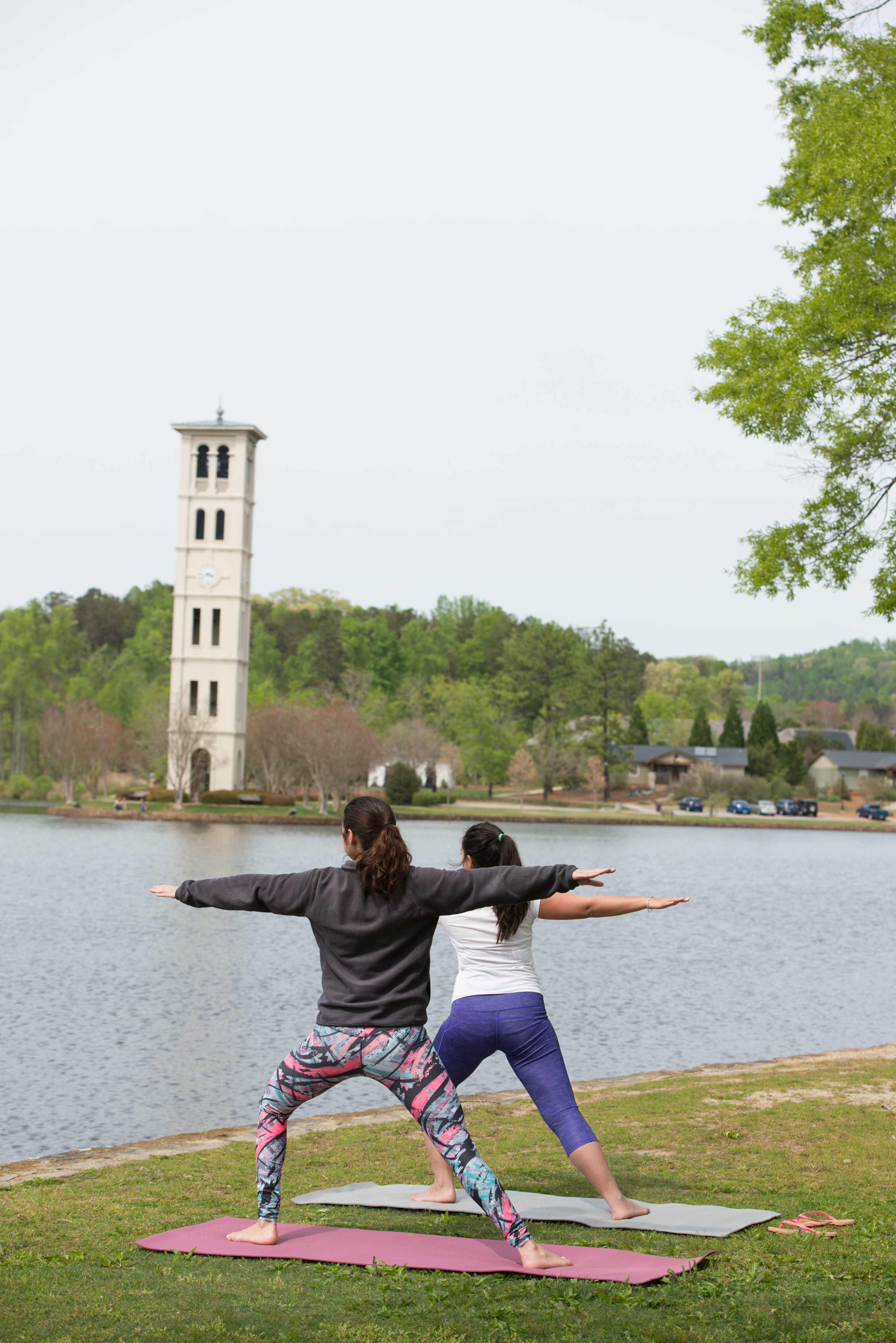Why Furman’s Campus Is Good for Your Health
Elizabeth Holt, assistant professor of health sciences, and John Quinn, associate professor of biology, have co-authored a ground-breaking study showing that college students who are frequently active in outdoor green spaces feel less stress and a greater overall sense of well-being.
“I used to say to students, before exams, ‘Go take a walk.’ Now, I actually have data to show that if you go take a walk around the lake, you’ll feel better and perhaps could do better on your exams,” said Quinn.
The exploratory study is the first of its kind to examine the benefits of active and also more passive uses of green space amongst college students.

Students practice yoga across from the Bell Tower.
“There’s been a recent increase in research energy around measuring the benefits of green spaces,” said Holt. “The literature and studies keep coming in: Living near a park seems to be beneficial to both physical and mental health,” for example.
“But before this study there really wasn’t much work examining the benefits that green spaces may have for college students, who we know deal with high levels of stress.” Furman’s campus, with its lake and trails, provided the ideal setting to investigate how busy students interact with nature.
It wasn’t just the campus that gave the study momentum. The idea started with undergraduate Quinn K. Lombard ’17, who had taken classes in both health and environmental sciences while at Furman, and is now working on a master’s degree in public health at George Washington University. The interdisciplinary scope of Lombard’s course of study spurred her to approach Quinn and Holt about a research project to measure benefits of green space use on a college campus.
“I study how to measure health,” said Holt. “That’s what I have expertise in, and Dr. Quinn has expertise in the natural sciences — how to measure access to green spaces and natural capital, for example.”
“Every discipline has its own set of rules and norms, so we had to navigate what our disciplinary requirements were and where we could relax some of those expectations,” said Quinn. “I had a very specific idea of what nature is, but you talk to somebody who’s not an ecologist and they have a much more abstract idea of that.”
Both faculty members agreed that the chance to collaborate made the experience special.
“I really, really value the interdisciplinary aspect. It doesn’t happen by accident. Furman is a great place for that,” said Quinn. “I couldn’t have done this without Elizabeth. We went back and forth, and that’s what made it so fun.”
Both faculty were surprised by a key takeaway from the study: To reap maximum benefits from green spaces, students may need to get moving.
“It’s actually the green exercise, it’s going outdoors and being active, taking a brisk walk around the lake or biking the Swamp Rabbit trail. It’s the actual activity in green space that’s linked to the measures of well-being, far more so than just being outside in any capacity,” said Holt.
“That students need to exercise or walk or do something in green space, that you can’t just get it by sitting there, did genuinely catch me by surprise,” said Quinn.
There’s a good chance you’ll catch both professors partaking in their favorite campus green space. Holt is fond of running around the lake, while Quinn treasures his commute.
“Every morning, when I bike in on the Swamp Rabbit Trail, I think, ‘Wow, this is where I go to work,'” he said. “We’re so fortunate at Furman.”